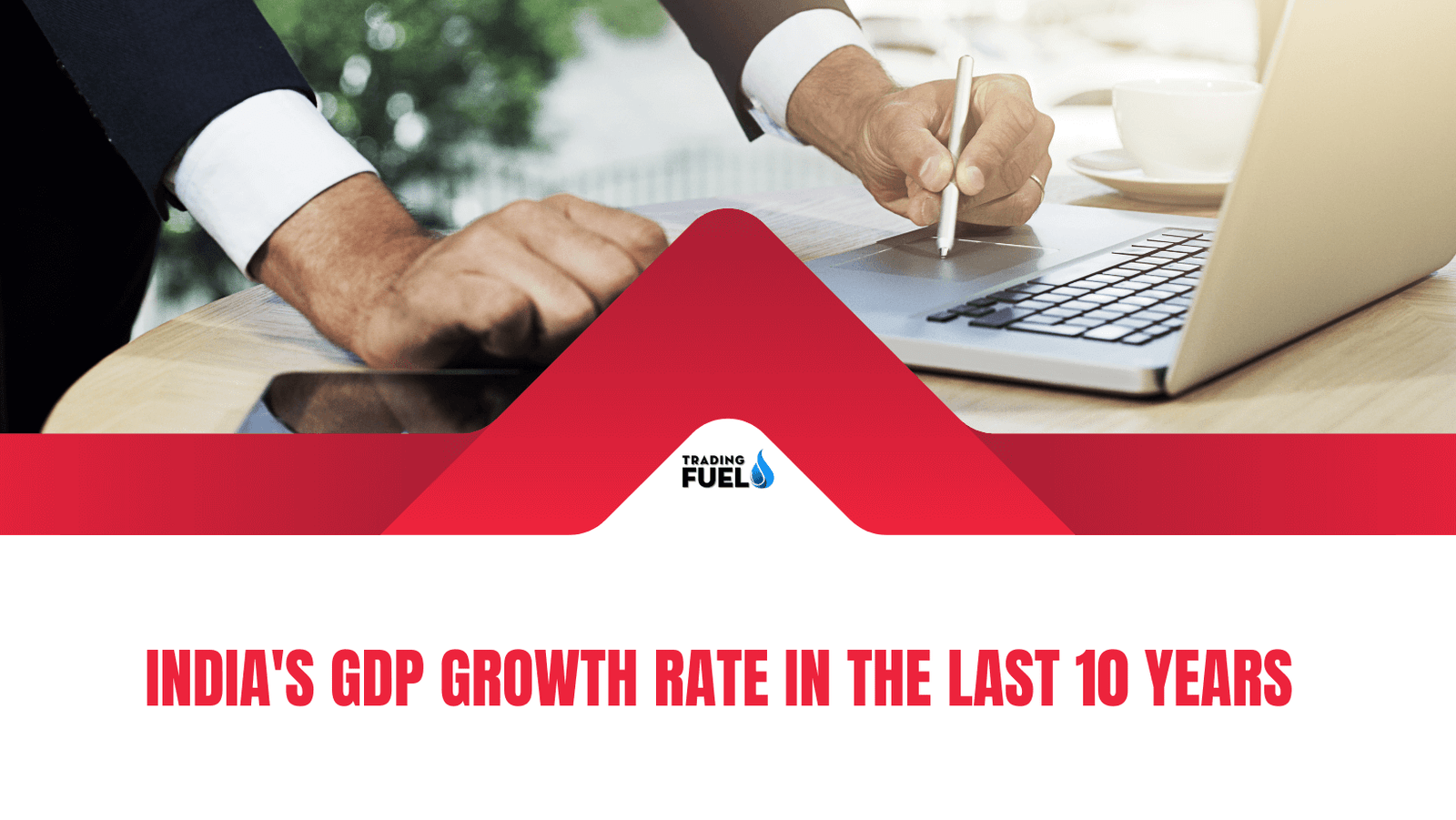India’s GDP growth rate in the last 10 years: The GDP growth rate in India will reflect the variation in the adjusted values of both the goods and services generated through the country’s economy during a period.
India is among the strong economies in the world that have been in an upward and downward trend because of the GDP of the country’s pre and post-pandemic.
India’s GDP:
- GDP stands for Gross Domestic Product.
- India is the 5th largest economy in terms of GDP.
- If we look at the varied sectors of our country, then hotels, transportation, and communication, alongside finance, insurance, real estate, etc., account for more than 60% of the GDP.
- Apart from that, agriculture, forestry, and fisheries account for around 12% of the total output, but the employment rate in these sectors accounts for more than 50% of the entire working force.
- Manufacturing units contribute to 15% of the GDP, construction around 8%, and mining, quarrying, power, and gas, and water delivery will contribute to the remaining 5%.
Summary of India’s GDP in brief:
The summary form of India’s GDP includes the following:

1. GDP growth rate from April to June 2022:
- The GDP figures of India for the April-June quarter of 2022 have increased by double digits but lately have also fallen short of the experts’ expectations.
- According to the estimates, the GDP has increased by 13.5% as of the current quarter.
- The GDP of the country also grew by 20.1% in the previous fiscal year during the same period.
- The manufacturing sector increased by 4.8%, whereas the mining industry grew by 6.5%.
- But if we analyze the independent government figures, then the central government’s budget deficit has reached about 20.5% of the annual objective at the end of July 2022-23.
- This figure is straight up from the previous year’s figure of 21.3%, which indicates improved public financing.
- During this period, the fiscal deficit was about Rs. 340,831 crores.
- A fiscal deficit means a gap between expenditure and revenue.
- The fiscal deficit is nothing but the reflection of the market borrowings from the government, and this also has a major impact on the GDP growth rate of the country.
Don’t Forget to Check: Why can’t RBI Print Unlimited Notes?
2. GDP growth rate over the last decade:
- If we consider the past 10-year trend for the GDP growth rate in India, then we can gauge that India’s GDP has been a factor of both the country’s internal decisions and extrinsic global factors.
- The GDP growth rate of India in 2012 stood at 5.5%, which kept on growing till 2017.
- The decreasing trend continued till the GDP reached a negative figure as far as India’s GDP growth rate of 2020 is concerned.
- The obvious reasons for the same are the unmanageable fiscal deficit, economic disparity, the COVID pandemic, and government and political turbulence.
- The post-pandemic scenario has been a positive end to the story for the country in the year 2021, where the GDP growth rate stood at 8.9%, where many sectors, majorly healthcare, have been contributing factors.
3. Factors that have influenced the GDP growth rate:
- There has been a shift in economic power and focus on the growing economies in the BRIC countries in recent years.
- The BRIC countries include Brazil, Russia, India, and China.
- The BRIC’s GDP rate is higher than the other strong economies in the world, such as the United States and Germany.
- The United States has the world’s largest economy, and China has the second-largest economy in terms of global GDP.
- Apart from the global crisis in 2008 and 2009, India managed to have outstanding GDP growth rates.
- The main factors that contribute to the roller-coaster growth of GDP in India are as follows:

Must Know: Types of Price Charts for Trading
i) Healthcare sector:
- As a result of the pandemic, India has emerged as a global leader in the production of vaccines.
- The production of vaccines has begun on a very large scale in several regions of India, which has resulted in increased export to other nations as well.
- This led to an increase in the GDP of the country.
ii) A boom in the investment business:
- Personal and private investments are considered to be the most important factors that will influence the GDP of the country.
- The economy’s unknown risks have eventually been known to decrease, and thus Indian firms have become an appealing host to investment both in the local as well as international markets.
4. GDP in the coming years:
- As per reports, India’s GDP rate for the year 2022 is projected to be at 7.8% even after the surge in prices.
- But for FY 2023-2024, GDP is predicted to fall by 6.8% and then eventually see a rise in 2024-2025 with a growth rate of 7.04%.
- This predicted analysis could be a factor in the post-recession recovery across the globe, which is likely to affect the GDP of India in the short term.
Also, Know About: How to Read Stock Chart?
Conclusion:
We hope that the above blog gives you an understanding of the GDP figures of our country. (Live GDP)
About Us:
Trading Fuel is our website for blogs where we give you knowledge about finance, economics, stock markets, intraday trading, and technical analysis. Stay tuned with us for more such blogs.

